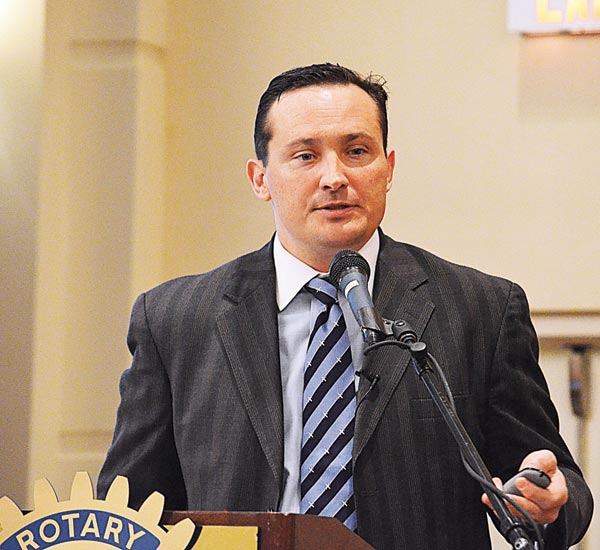January 21-27, 2013
In his Foreward of the book “How Money Walks” by Travis Brown, economist Dr. Arthur Laffer states, “Finally, we have a book that addresses one of our nations most critical fiscal issues: the migration of working wealth as a direct result of personal income tax rates.”
Brown’s book explains where the money in this country goes, and why. The author spoke recently to the Downtown Little Rock Rotary Club, where he explained that the data used in his book is from 1995 to 2010.
“For a long time how money walked in a state like Arkansas was directly from your own currency,” Brown said, “and gradually we went to a federal system, and now today what we track are basically, federal dollars that are reflected in your state 1040 tax return that you file as a resident of this state or potentially as a non-resident and a resident of somewhere else.”
Laffer says that the personal income tax is one of the least productive forms of taxation and that Brown’s book should serve as a wake-up call for states imposing punishingly high tax rates on their citizens.
Brown says that, according to the IRS, from 1995 to 2010 over $2 trillion and millions of Americans moved between the states.
Two trillion dollars is equivalent to the GDP of California, the ninth largest in the world. Some states, like Florida, saw tremendous gains ($86.4 billion), while others, like New York, experienced massive losses ($58.6 billion). People moved, and they took their working wealth with them.
Where did that working wealth go and which areas have a net gain and which have a net loss? Brown says the best way to do this is by looking at personal income tax.
There are nine states that currently don’t have any personal income tax. Two are Arkansas neighbors, Tennessee and Texas. And in looking at their performance from 1995-2010, you see a massive amount of wealth that has net transferred into those states. - 146 billion dollars. “Those with the highest tax rate,” Brown says, “lost, over the same period, 107.4 billion dollars in adjusted gross income.
Arkansas is among those states that have a bracket that goes up to about 7 percent, and several different tax tables based on what you may qualify for.
So how did Arkansas perform on the net gain or net loss, cumulative, over 1995 all the way to the most recent year available, 2010? The good news is, it’s slightly positive: 2.1 Billion dollars, which, strongly outperforms the 6.2 billion loss from our neighbor to the south, Louisiana.
There are some very modest gains in Mississippi and some turnaround happening in Oklahoma. But then you take the two neighbors without a personal income tax: Tennessee, at a net gain of 8.2 billion, and Texas, which jumps off the page with 22 billion dollars. Brown said 22 billion dollars is the equivalent of the entire Missouri state budget, his home state.
Around Arkansas, there are places like Benton County that have seen 68 percent of their net gain, the average of about 56 of 82 million dollars on annual average over the last 15 years coming from outside the state. The numbers can be viewed down to local counties that are far more rural, such as Greene County where you still see 54 percent gain from outside of the state. “Why do we look at it from inside versus outside the state?” Brown asks. “Well, simply because from the standpoint of the state, someone moving from one county to the other might be relevant to the county but it doesn’t change the state budget performance of a population growing or an economic base growing or shrinking.”
“And they do move with their wallet, “Brown said, “and the distributions when you step out of your state are not equally distributed around everyone based on available land and general population over the last 15 years.”
The states that are receiving AGI in large numbers are getting it from strong concentrations in places like New York and Palm Beach, Florida (which Florida received 6 billion), and places like Chicago and MN that have people leaving are not just moving to other parts of the Midwest, they are moving to Maricopa County, AZ and Phoenix in particular. As tax rates increase in California, Californians want to stay on the West Coast. They like a desert, dry climate, but they don’t have to stay in California. They go to Vegas and Phoenix and get that, and that’s why Phoenix has gotten 20 percent of all Californians in the last five years, with about half of the other remaining balance going straight to Nevada, which, again, does not have a personal income tax.



